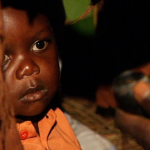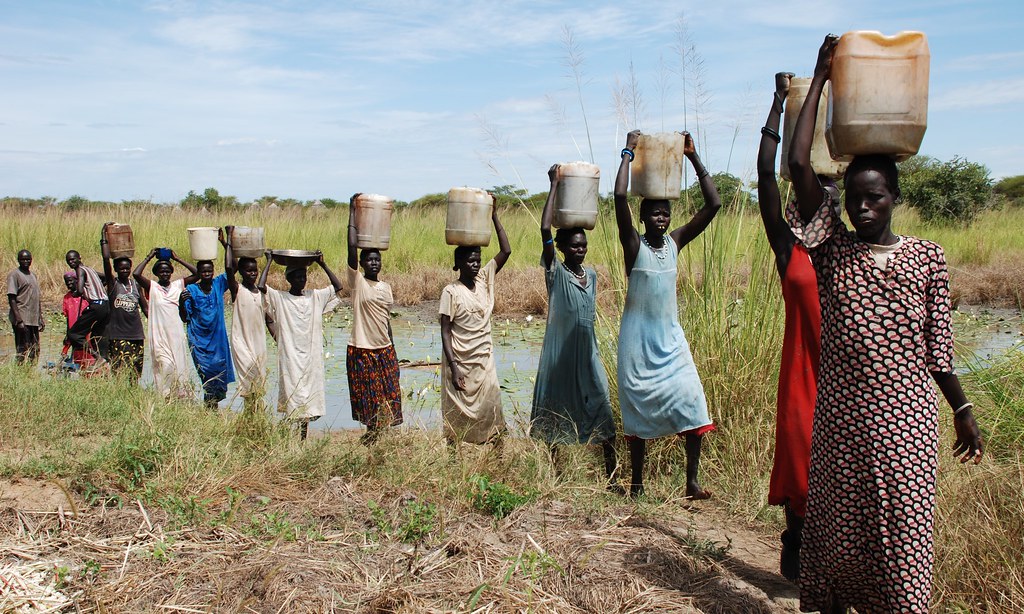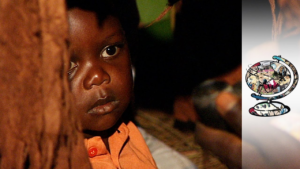A new paper investigates the effects of chlorine treatment at water sources in some Kenyan villages. The findings were astounding.
Even in dire years like 2020 and 2021, when the pall of the pandemic and economic uncertainty still shadows much of everyday life, there are areas where things are trending in a positive direction. We’re making slow but steady progress toward ending global poverty, achieving carbon-neutral energy, and, most recently, vaccinating the world against Covid-19.
But maybe the most hopeful news I’ve read this year is a new white paper on water chlorination — a paper that suggests a simple water treatment solution could dramatically reduce child mortality in poor countries.
The recent economists behind the paper — Johannes Haushofer (who’s done some of my favorite randomized development studies), Nobel winner Michael Kremer, Ricardo Maertens, and Brandon Joel Tan — analyze a large-scale experiment called WASH Benefits, which randomly selected certain villages in rural Kenya to receive a variety of water, sanitation, and hygiene (WASH) programs, while other villages served as a control group.
The experiment tried a bunch of different WASH interventions, including more sanitary latrines, programs promoting hand-washing with soap, nutrition supplements for young children, and more.
One tactic in particular jumped out: adding a simple chlorine solution to drinking water.
The importance of clean water
This new paper focuses on the distribution of a chlorine solution placed in large dispensers (that look a bit like office water coolers) next to water sources like pumps and wells.
Water chlorination is standard in developed countries these days; America’s experience began in Jersey City, New Jersey, in 1908, at the instigation of a doctor named John L. Leal. Chlorine is a powerful disinfectant, and in the US context, doses of chlorinated solution safe for human consumption proved particularly powerful at killing the bacteria that caused typhoid fever in the water supply.
Other cities and states copied Leal’s advance, and typhoid deaths plummeted. In Massachusetts, for instance, a state for which good records exist, the death rate from typhoid fell by over 99 percent between 1905 and 1945, driven by cleaner water and increased vaccination.
It wasn’t just typhoid. Chlorination and other clean-water programs played a huge role in the fall in overall mortality and child mortality in the US over the 20th century. Economists David Cutler and Grant Miller estimate that the rollout of water filtration and chlorination systems throughout the US explains half the decline in overall mortality in major cities between 1900 and 1936, two-thirds of the decline in child mortality, and three-quarters of the decline in infant mortality.
In many poor countries, waterborne diarrheal diseases like rotovirus, E. coli, or cholera are the biggest threat that better water quality is meant to target. As of 2016, diarrhea was the eighth leading cause of death in the world, killing some 1.6 million people of all ages that year, including 446,000 children. But better water quality can reduce rates of other illness too; reducing rates of diarrheal illnesses seems to reduce rates of respiratory illness, for instance.
The new study on chlorination in Kenya used data collected in 2018 on the deaths of all children in the target villages born after January 2008, and compared death rates in villages that got these chlorine dispensers four to six years earlier to those in villages that didn’t t get them.
The results were astonishing: Mortality for children under 5 fell by 63 percent. The baseline death rate for children under 5 in the control villages was a horrific 2.23 percent — more than one in 50 children died before their fifth birthdays.
Providing chlorine cut that rate to 0.82 percent, or less than one in 100.
To be sure, that’s still far too high; in the US in 2019, the under-5 death rate was about 0.13 percent. But cutting child mortality by more than half is a huge achievement.
The programs in the study were specifically targeted to pregnant women, which might help explain why they saw such large effects on small children; changes in water quality starting in the womb can ripple out over the first few years of a child’s life, reducing rates of diarrhea and other conditions caused by waterborne illness that can prove life-threatening.
A cost-effective way to save lives
Here’s another important upshot from the study: The mortality reduction proved relatively cheap to achieve.
Using data from Evidence Action, an aid group whose program Dispensers for Safe Water distributes these chlorine dispensers in Uganda, Kenya, and Malawi, the researchers estimate that the program saves a life for about $1,941.
That’s an astonishingly low number, lower even than GiveWell’s estimates for some of its top charities, many of which it selects specifically because they can save lives at the lowest possible cost per life saved.
I don’t blame you if you think all this sounds a bit too good to be true. One of the authors, Haushofer, told me in an email he was “very happy about (and mildly shocked by) those results.”
The paper cites an as-yet unpublished meta-analysis by some of its authors that found prior experiments on water chlorination found it could reduce mortality by 25.4 percent — a lot, but not nearly as big as the headline estimate in this paper.
The authors speculate that the experiment in this paper may have been in an area with unusually high levels of water contamination and diarrhea, allowing chlorination to have a bigger effect.
More optimistically, it’s possible this experiment showed bigger effects because it tested this specific dispenser design, where chlorine is placed next to water sources, with an easy-to-use dispenser that releases a pre-measured dose. That might make villages more likely to use the chlorine, leading to bigger health improvements. If that’s true, then these results could scale.
As it stands, it’s just one study, and I’m eager to see more experimental work on this intervention. But it’s an important study, and one that makes Evidence Action’s Dispensers for Safe Water, and similar programs, seem like highly effective solutions worthy of support from both government aid groups and private donors
By Dylan Matthews







More Stories
Will we soon become Vishgurus by selling our education and childhood?
Kenya: What I saw at Nairobi will remain unforgettable.
Trinidad trip: Whatever I saw, my heart was filled with pride.